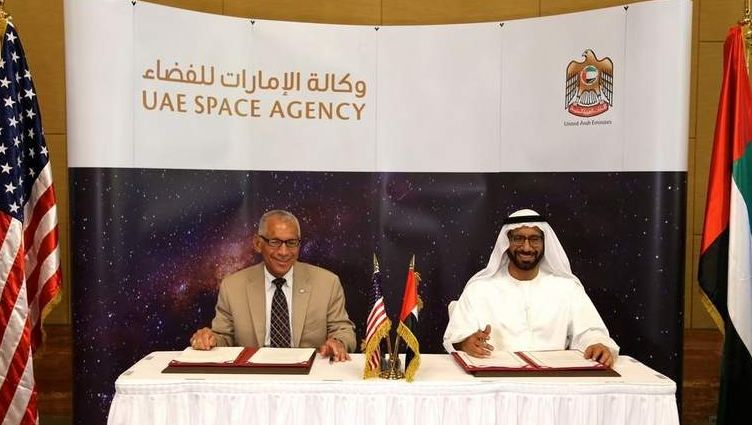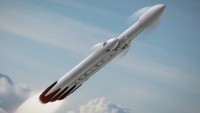NASA Decides to Support SpaceX’s Mars Landing Missions
| Arthur Dominic Villasanta | | Jun 15, 2016 10:37 PM EDT |
(Photo : SpaceX) Red Dragon uses supersonic retropropulsion to slow down as it pierces the Martian atmosphere .
It's probably a case of "If you can't beat 'em, join 'em," but NASA has just decided to support SpaceX's Red Dragon mission to Mars in 2018, and plans to have its own payloads aboard the next SpaceX spacecraft set to later land on Mars.
NASA said its science and space technology mission directorates have a "wish list" of technology demonstration payloads it wants on a future SpaceX Mars mission at a later date. NASA said it will try to have a payload ready for the 2018 Red Dragon mission despite there being less than 24 months before the launch window for that mission opens.
Like Us on Facebook
"We've had very preliminary talks on payloads for the 2018 mission," said Steve Jurczyk, NASA associate administrator for space technology.
"The SpaceX collaboration really is an EDL (entry, descent and landing) demonstration for us," said Jurczyk.
Of special interest to NASA is Red Dragon's "supersonic retropropulsion" that enables the landing of spacecraft far heavier than is possible with NASA's current methods such as parasails and huge bouncing balls. Access to supersonic retropropulsion data remains NASA's primary interest in Red Dragon.
NASA proposes to land its astronauts on Mars in 2035 with landings by its own robot spacecraft to precede this historic event.
Jurczyk also said NASA and SpaceX have revised an existing unfunded Space Act Agreement to focus on a planned 2018 Mars lander mission, using the unmanned Red Dragon spacecraft. Under that agreement, NASA will offer technical support to SpaceX in a number of areas. For its part, SpaceX will provide NASA with data from EDL phase of Red Dragon's mission to support NASA's future Mars missions.
Jurczyk said a particular area of interest for NASA is situ resource utilization or ISRU. This means testing technologies that can extract water, oxygen and other resources from the Martian surface or atmosphere.
NASA plans to have an ISRU experiment on the Mars 2020 mission that will convert carbon dioxide in the Martian atmosphere into oxygen. Another experiment will produce methane, which can be used as rocket fuel.
"One would be in situ resource utilization using the water in the soil at Mars to generate potable water and hydrogen and oxygen," he said.
Jurczyk said other technology demonstration payloads could include systems that could generate 10 kilowatts or more of electrical power on the surface.
TagsSpaceX, Red Dragon, NASA, Steve Jurczyk, Mars
©2015 Chinatopix All rights reserved. Do not reproduce without permission
EDITOR'S PICKS
-

Did the Trump administration just announce plans for a trade war with ‘hostile’ China and Russia?
-

US Senate passes Taiwan travel bill slammed by China
-

As Yan Sihong’s family grieves, here are other Chinese students who went missing abroad. Some have never been found
-

Beijing blasts Western critics who ‘smear China’ with the term sharp power
-

China Envoy Seeks to Defuse Tensions With U.S. as a Trade War Brews
-

Singapore's Deputy PM Provides Bitcoin Vote of Confidence Amid China's Blanket Bans
-

China warns investors over risks in overseas virtual currency trading
-

Chinese government most trustworthy: survey
-

Kashima Antlers On Course For Back-To-Back Titles
MOST POPULAR
LATEST NEWS
Zhou Yongkang: China's Former Security Chief Sentenced to Life in Prison

China's former Chief of the Ministry of Public Security, Zhou Yongkang, has been given a life sentence after he was found guilty of abusing his office, bribery and deliberately ... Full Article
TRENDING STORY

China Pork Prices Expected to Stabilize As The Supplies Recover

Elephone P9000 Smartphone is now on Sale on Amazon India

There's a Big Chance Cliffhangers Won't Still Be Resolved When Grey's Anatomy Season 13 Returns

Supreme Court Ruled on Samsung vs Apple Dispute for Patent Infringement

Microsoft Surface Pro 5 Rumors and Release Date: What is the Latest?














